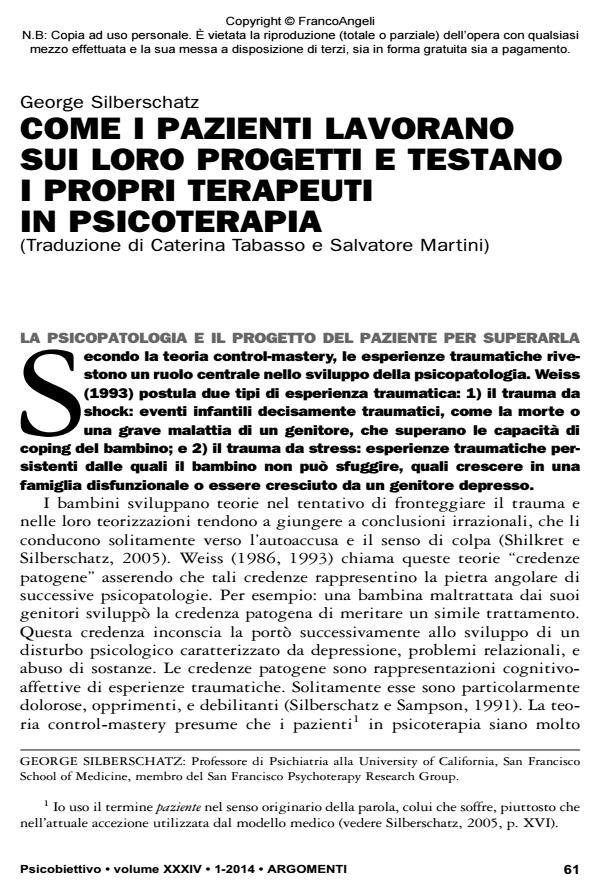Come i pazienti lavorano sui loro progetti e testano i propri terapeuti in psicoterapia
Titolo Rivista PSICOBIETTIVO
Autori/Curatori George Silberschatz
Anno di pubblicazione 2014 Fascicolo 2014/1
Lingua Italiano Numero pagine 11 P. 61-71 Dimensione file 539 KB
DOI 10.3280/PSOB2014-001005
Il DOI è il codice a barre della proprietà intellettuale: per saperne di più
clicca qui
Qui sotto puoi vedere in anteprima la prima pagina di questo articolo.
Se questo articolo ti interessa, lo puoi acquistare (e scaricare in formato pdf) seguendo le facili indicazioni per acquistare il download credit. Acquista Download Credits per scaricare questo Articolo in formato PDF

FrancoAngeli è membro della Publishers International Linking Association, Inc (PILA)associazione indipendente e non profit per facilitare (attraverso i servizi tecnologici implementati da CrossRef.org) l’accesso degli studiosi ai contenuti digitali nelle pubblicazioni professionali e scientifiche
La psicopatologia deriva da esperienze traumatiche infantili che frequentemente conducono allo sviluppo di credenze inconsce patogene. I pazienti intraprendono una psicoterapia con l’obiettivo inconscio di smentire tali credenze. Ci sono tre vie principali attraverso le quali essi possono farlo: 1) usando la relazione terapeutica in quanto tale; 2) usando nuove acquisizioni o insight veicolati dalle interpretazioni del terapeuta; o 3) sottoponendo direttamente il terapeuta a delle prove. Esistono due differenti strategie di prova: 1) attraverso un test transferale, il paziente cerca di valutare se il terapeuta lo traumatizzerà come - il paziente - è stato traumatizzato nell’infanzia; 2) nel test del rivolgimento da passivo ad attivo, il paziente traumatizza il terapeuta come egli stesso è stato traumatizzato, nel tentativo di superare il trauma. I pazienti sono altamente motivati a smentire le loro credenze patogene. Tipicamente devono "testare" il terapeuta nel corso di tutto il trattamento per poterlo fare.
Parole chiave:Teoria control-mastery; teoria psicodinamica; psicoterapia.
George Silberschatz, Come i pazienti lavorano sui loro progetti e testano i propri terapeuti in psicoterapia in "PSICOBIETTIVO" 1/2014, pp 61-71, DOI: 10.3280/PSOB2014-001005